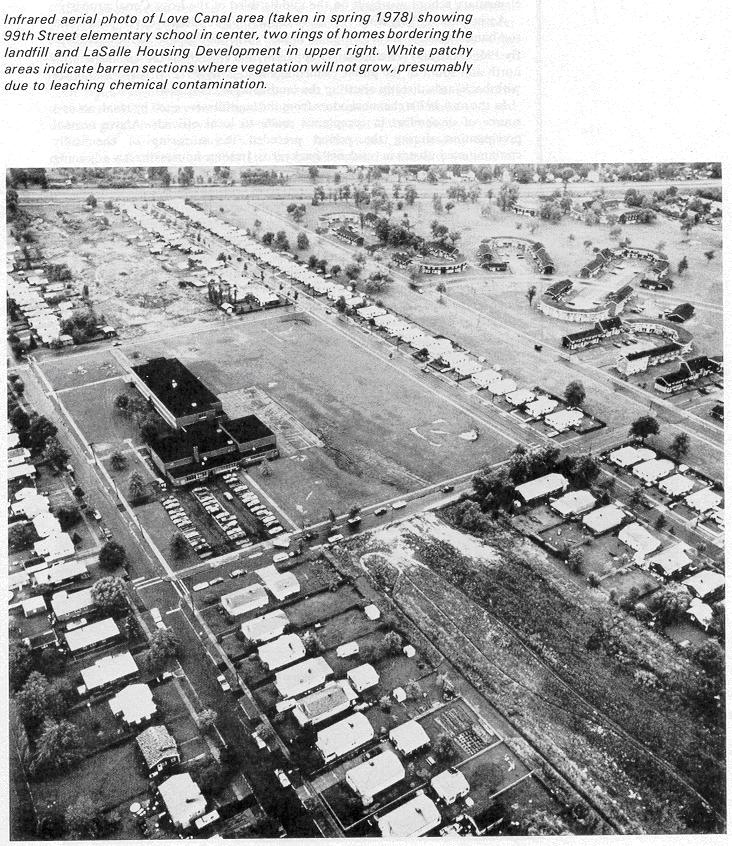The tragedy of Love Canal is so incredulous that most people cannot comprehend how such a disaster was allowed to occur. Yet, it is important to note the problem started well before 1970, the year of the first Earth Day, which means the Environmental Protection Agency (EPA), along with many important laws and policies, had not yet existed. Environmental awareness wasn’t part of the average American’s psyche back then.
Love Canal is the name of a post-war, working-class neighborhood built adjacent to a defunct canal project branching off the Niagara River in upstate NY. Located just a few miles from Niagara Falls, it was supposed to become a model community representing modern living. Instead, it became one of the worst environmental disasters in the nation’s history. The Hooker Chemical Company had used the partially dug canal as a chemical waste dump from 1942-1953, amounting to almost 21,000 tons of toxic chemicals, including approximately a dozen known carcinogens, eventually leaching into the basements and yards of homes in the area. To make matters worse, the Niagara Falls School Board decided to build a school directly above the canal. Although they were warned of potential hazards by the chemical company, the school board persisted, even signing off on a release form that was supposed to prevent any legal action against the Hooker Chemical Company in the future. The land itself was bought for just $1.
Unfortunately, a series of illnesses began to afflict residents in the late 1970’s due to the nature of the chemicals buried in the ground. These included asthma, epilepsy, migraines, and nephrosis (kidney disease), along with abnormally high rates of birth defects and miscarriages. News of this tragedy began to build momentum thanks to local activists, which culminated in 1978 when President Carter declared the area a federal health emergency and ordered the government to relocate all affected families.
This action represented the first time in American history that emergency funds were used for something other than natural disasters.
Love Canal also set the stage for the Environmental Justice movement, which the EPA defines as:
“…the fair treatment and meaningful involvement of all people regardless of race, color, national origin, or income with respect to the development, implementation, and enforcement of environmental laws, regulations, and policies… It will be achieved when everyone enjoys the same degree of protection from environmental and health hazards and equal access to the decision-making process to have a healthy environment in which to live, learn, and work.”
This philosophy is of particular interest to us at the Coalition for Responsible Equitable Economic Development (CREED LA). Given the wide range of individuals that work on Los Angeles’ construction projects, it is not uncommon for matters that affect the quality of life for on-site workers, along with residents within the local community, to arise. If not managed properly, construction activities can be major sources of air, water, soil, noise, and light pollution, all of which negatively impact the environment.
Creed LA proudly supports environmentally-responsible projects in Los Angeles that not only have a positive impact on the local community, but support LA’s working families as well.
We fight to ensure that developers pay fair wages to the hard working construction professionals throughout the industry while simultaneously providing them with quality health care, continued training, and trustworthy retirement plans, regardless of race, religion, or socioeconomic status. To learn more about how our non-profit organization supports those building a better, greener world for us all, contact Jeff Modrzejewski at (877) 810-7473.
Image licensed under a Creative Commons Attribution Share-Alike 3.0 License.

